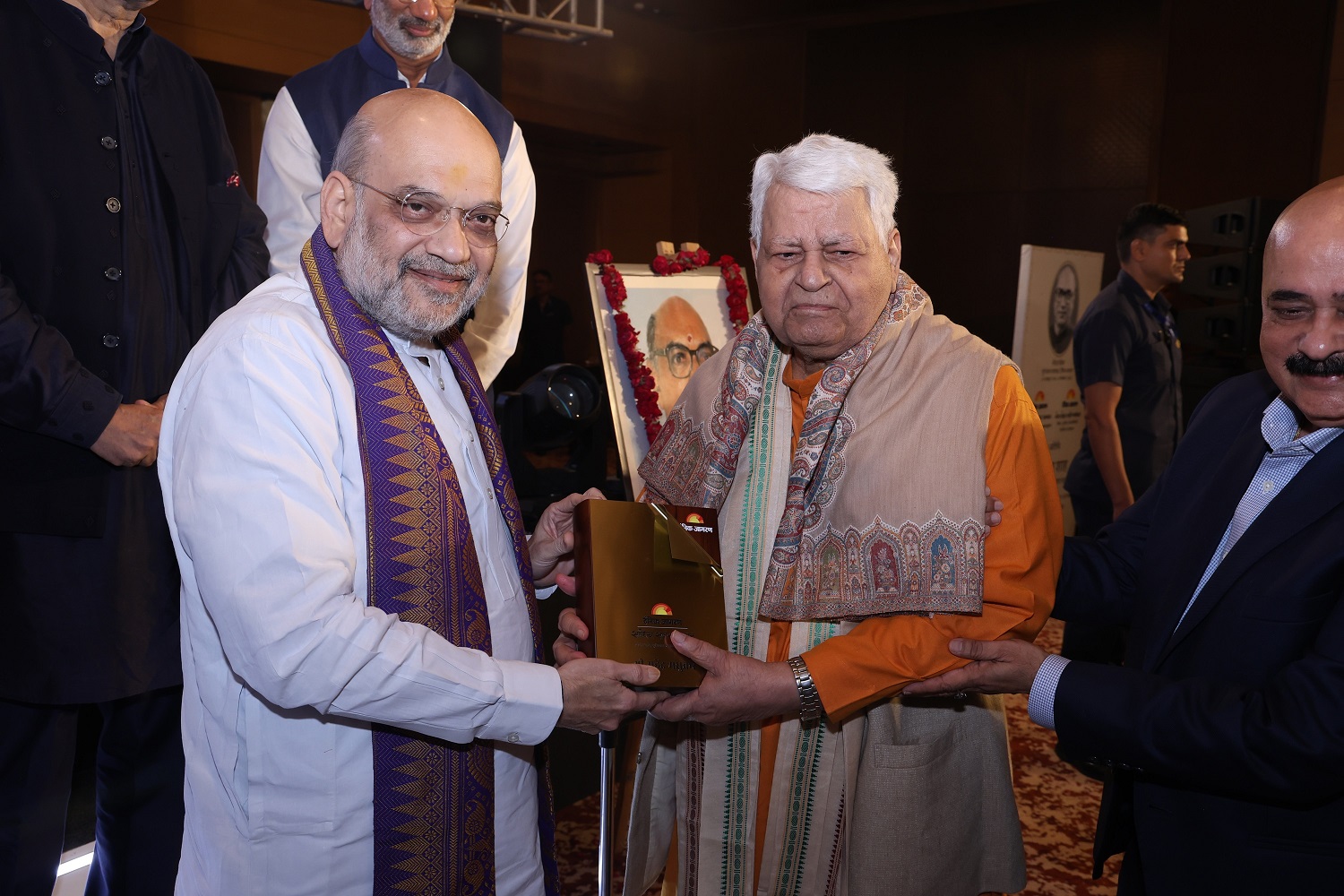
In a landmark address to a joint session of Congress, US President Donald Trump took a firm stance on trade, emphasizing his administration’s commitment to enforcing reciprocal tariffs on foreign imports. Among the countries he singled out was India, alongside China and the European Union, highlighting growing trade tensions between the United States and its global partners. Trump underscored the principle of “fair trade,” arguing that India and other nations have long imposed excessive tariffs on American goods, particularly automobiles, to the detriment of US businesses.
Speaking before a packed House of Representatives, Trump expressed strong dissatisfaction with what he described as unfair trade practices and called for swift corrective measures. “Other countries have used tariffs against us for decades, and now it’s our turn to start using them against those other countries,” he asserted, reinforcing his “America First” approach. Pointing to India’s high tariff rates, he stated, “India charges us tariffs, 100 percent. The system is not fair to the US; it never was.”
Trump also made a significant policy announcement: the implementation of reciprocal tariffs would commence on April 2, aiming to create a level playing field for American exporters. Under this initiative, the US plans to impose equivalent tariffs on nations that levy high duties on American goods. “Whatever they tariff us, we will tariff them. Whatever they tax us, we will tax them. If they use non-monetary barriers to keep us out of their market, we will do the same,” he declared.
While specific details remain unclear, experts predict that India could be disproportionately affected due to its relatively high tariffs on several categories of US imports. One of the most notable disparities Trump referenced was India’s 100 percent tariff on imported American automobiles, a longstanding issue between the two countries.
The prospect of reciprocal tariffs raises concerns about potential disruptions in India-US trade relations, which have strengthened significantly over the past decade. While India’s tariff policies align with its protective economic strategy, they remain considerably higher than those of the US, particularly in key sectors such as agriculture, textiles, and pharmaceuticals.
A recent Goldman Sachs report outlined three potential levels at which India could be impacted: country-wide tariffs, product-specific tariffs, or non-tariff barriers. The report suggested that applying tariffs across the board would be the most straightforward approach for the US, though the economic impact would depend on the scope of implementation.
At the product level, matching India’s tariffs on specific imports from the US could add complexity. Goldman Sachs estimated that such measures could widen the average tariff differential by approximately 11.5 percentage points, requiring a longer timeline to execute. While the auto sector has been a focal point, other industries such as agriculture and electronics could also face higher duties, further straining trade ties.
Non-tariff barriers, including administrative restrictions, import licenses, and export subsidies, would be the most complex approach, according to the report. These measures could lead to even higher tariffs or restrictions, making compliance and enforcement significantly more challenging.
India’s growing trade surplus with the US is also at risk as Trump’s administration adopts more aggressive trade policies. Over the past decade, India’s goods trade surplus with the US has doubled to $35 billion, representing nearly 1 percent of India’s GDP for the fiscal year ending in 2024. This surplus has been driven largely by strong Indian exports in electronics, pharmaceuticals, and textiles—sectors that could be particularly vulnerable to reciprocal tariffs.
Despite these concerns, Goldman Sachs noted that India’s gross exports to the US, at around 2 percent of GDP, remain relatively modest compared to other emerging markets. The report estimated that increased US tariffs could reduce India’s GDP growth by 0.1 to 0.3 percentage points, depending on the extent of tariff reciprocity and US demand elasticity for Indian goods.
However, if the Trump administration were to impose broader global tariffs—something it has previously threatened—the stakes would rise significantly. In such a scenario, India’s exposure to US final demand, including goods routed through third countries, could double to 4 percent of its GDP. The potential domestic growth impact in this case could range from 0.1 to 0.6 percentage points.
As the April 2 deadline approaches, the global trade community will be watching closely to see how Trump’s reciprocal tariff measures unfold and whether they trigger wider disruptions in international markets. For India, the challenge lies in balancing the need to protect its domestic industries while preventing a full-scale trade conflict with the world’s largest economy.









amoxicillin sale – combamoxi.com how to get amoxil without a prescription
amoxicillin where to buy – combamoxi buy amoxil pill
where can i buy fluconazole – https://gpdifluca.com/# order fluconazole 200mg generic
fluconazole online – this buy forcan no prescription
lexapro 10mg without prescription – lexapro generic lexapro 20mg brand
buy cenforce 50mg – cenforcers.com cheap cenforce 50mg
cheap cenforce 50mg – https://cenforcers.com/ oral cenforce
cialis canadian pharmacy – https://ciltadgn.com/ cialis overnight shipping
cialis generic overnite – https://ciltadgn.com/# what is tadalafil made from
cialis prostate – cialis dosage for ed most recommended online pharmacies cialis
cialis professional review – strongtadafl tadalafil citrate
buy levitra cialis viagra – this cheap viagra in australia
cialis viagra levitra sale – buy viagra 50 mg online cheap kamagra/viagra
Facts blog you possess here.. It’s intricate to espy great worth script like yours these days. I really respect individuals like you! Rent vigilance!! purchase neurontin pill
Thanks for sharing. It’s top quality. isotretinoin generic
I am in truth enchant‚e ‘ to coup d’oeil at this blog posts which consists of tons of of use facts, thanks object of providing such data. comprar cenforce 150 en espaГ±a
More peace pieces like this would insinuate the интернет better. https://prohnrg.com/product/omeprazole-20-mg/
This website exceedingly has all of the tidings and facts I needed to this case and didn’t comprehend who to ask. https://ursxdol.com/ventolin-albuterol/
Facts blog you possess here.. It’s severely to on great quality article like yours these days. I honestly appreciate individuals like you! Go through care!! ventolin inhalator medication
With thanks. Loads of expertise! https://prohnrg.com/
Thanks for sharing. It’s acme quality. https://aranitidine.com/fr/levitra_francaise/
This is the tolerant of post I find helpful. https://aranitidine.com/fr/acheter-cenforce/
I am in fact happy to gleam at this blog posts which consists of tons of worthwhile facts, thanks for providing such data. https://ondactone.com/spironolactone/
I couldn’t resist commenting. Profoundly written! https://ondactone.com/product/domperidone/
More posts like this would add up to the online elbow-room more useful.
https://doxycyclinege.com/pro/ranitidine/
This website absolutely has all of the tidings and facts I needed there this thesis and didn’t know who to ask.
https://doxycyclinege.com/pro/tamsulosin/
This website absolutely has all of the low-down and facts I needed adjacent to this participant and didn’t positive who to ask. http://bbs.51pinzhi.cn/home.php?mod=space&uid=7053881
Greetings! Extremely productive par‘nesis within this article! It’s the crumb changes which will turn the largest changes. Thanks a lot for sharing! http://furiouslyeclectic.com/forum/member.php?action=profile&uid=24578
forxiga 10mg cheap – https://janozin.com/# forxiga for sale
buy forxiga 10 mg without prescription – https://janozin.com/ dapagliflozin 10 mg generic
purchase orlistat pills – buy xenical without a prescription xenical pills
orlistat canada – https://asacostat.com/# buy orlistat 60mg generic
Thanks towards putting this up. It’s well done. http://bbs.51pinzhi.cn/home.php?mod=space&uid=7111858
This is the gentle of criticism I in fact appreciate. http://wightsupport.com/forum/member.php?action=profile&uid=22046
You can protect yourself and your ancestors by way of being alert when buying medicine online. Some pharmacy websites control legally and put forward convenience, solitariness, bring in savings and safeguards for purchasing medicines. buy in TerbinaPharmacy https://terbinafines.com/product/provera.html provera
You can shelter yourself and your ancestors by being cautious when buying prescription online. Some pharmacopoeia websites function legally and offer convenience, privacy, sell for savings and safeguards to purchasing medicines. buy in TerbinaPharmacy https://terbinafines.com/product/synthroid.html synthroid
Greetings! Extremely useful advice within this article! It’s the crumb changes which choice espy the largest changes. Thanks a portion towards sharing! gГ©nГ©rique du viagra professional prix
More posts like this would force the blogosphere more useful. TerbinaPharmacy
Thanks on putting this up. It’s well done.
Thanks towards putting this up. It’s okay done.